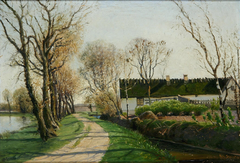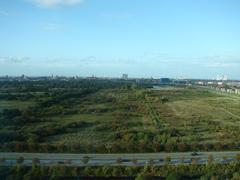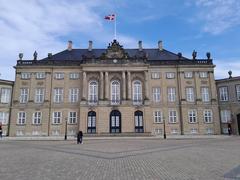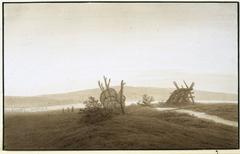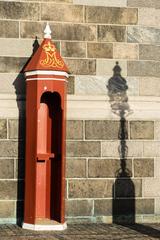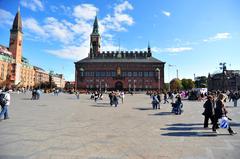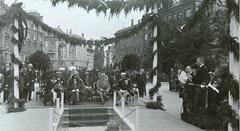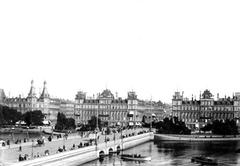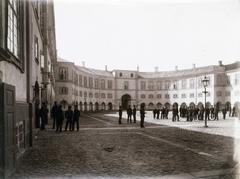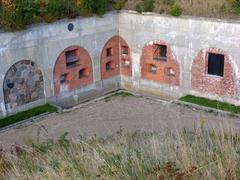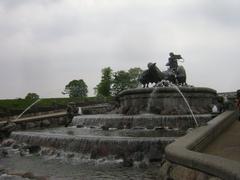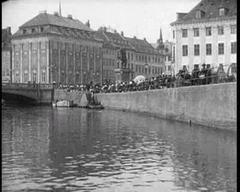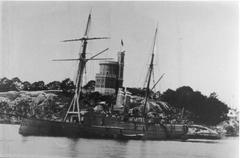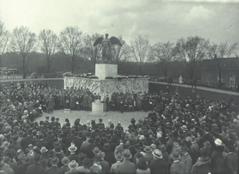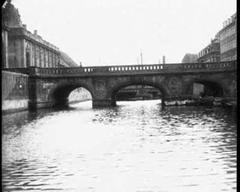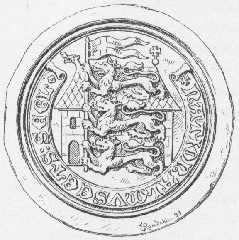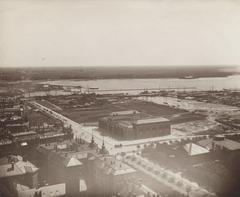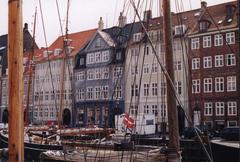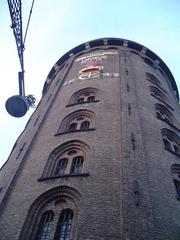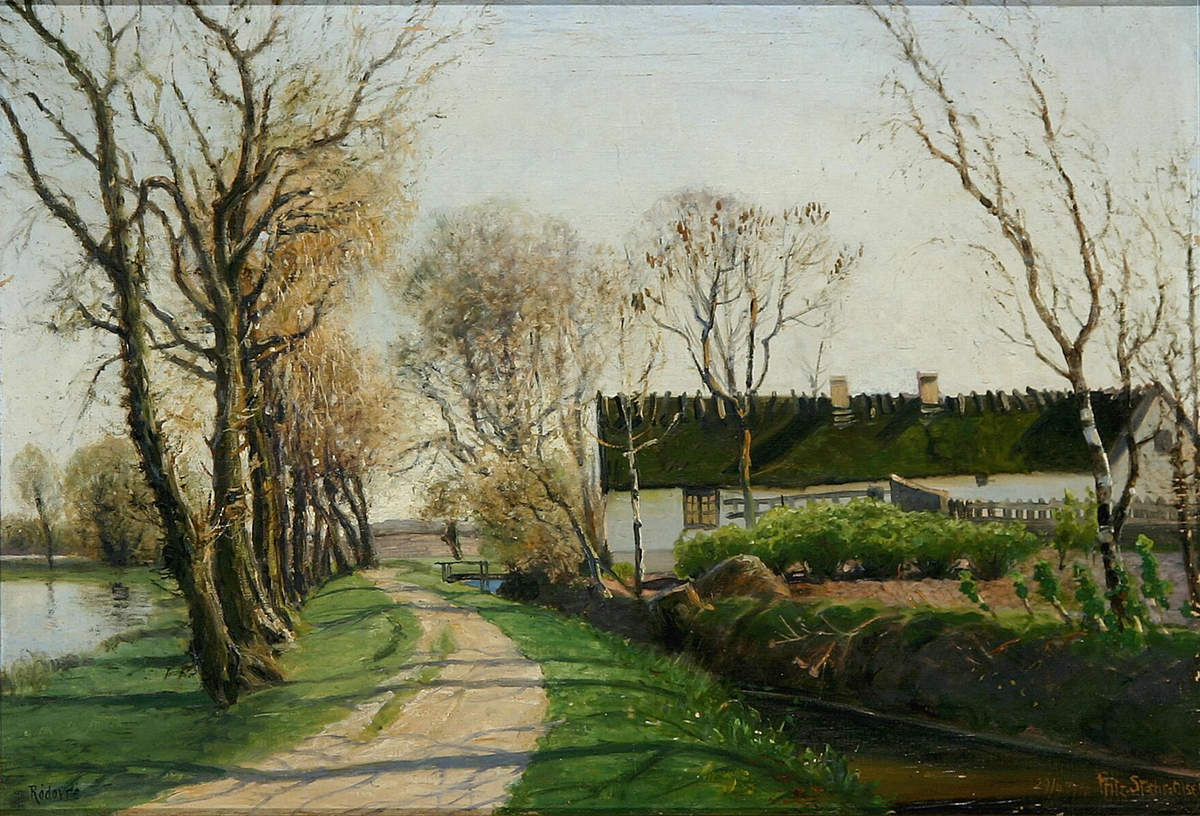
Visiting Ejbybunkeren: Hours, Tickets, and Historical Insights in Frederiksberg, Denmark
Date: 19/07/2024
Introduction
Discover the captivating history and immersive experience of visiting Ejbybunkeren, a Cold War-era bunker situated in Frederiksberg, Copenhagen. This historical monument offers a unique window into Denmark’s past, allowing visitors to explore the strategic role it played during a period marked by intense geopolitical tension. Ejbybunkeren was constructed in the early 1950s, reflecting Denmark’s efforts to fortify its defenses amidst the looming threat of nuclear warfare (source). Today, it stands as a museum managed by the Danish Civil Defense Historical Society, providing an educational and interactive experience for history enthusiasts and casual visitors alike (source). Whether you’re interested in the architectural ingenuity of the bunker, its technological advancements, or simply looking for an intriguing destination in Copenhagen, Ejbybunkeren is a must-visit site.
Table of Contents
- Introduction
- Origins and Construction
- Cold War Significance
- Technological Advancements
- Post-Cold War Transition
- Preservation and Public Access
- Visitor Information
- Educational Programs and Events
- Visitor Experience
- Conclusion
- FAQ
Origins and Construction
Ejbybunkeren, located in Frederiksberg, Denmark, is a significant historical site that dates back to the Cold War era. The bunker was constructed in the early 1950s as part of Denmark’s efforts to bolster its defense infrastructure during a period marked by heightened geopolitical tensions between the Western bloc and the Soviet Union. The construction of Ejbybunkeren was initiated in response to the perceived threat of nuclear warfare, which necessitated the establishment of secure command centers capable of withstanding potential attacks.
Its strategic location in Frederiksberg, a central district in Copenhagen, was chosen to ensure accessibility and coordination in the event of an emergency. The construction involved extensive underground excavation and the use of reinforced concrete to create a structure that could endure significant blasts and radiation exposure.
Cold War Significance
During the Cold War, Ejbybunkeren played a crucial role in Denmark’s national defense strategy. It was equipped with advanced communication systems, including radio and telegraph equipment, to facilitate secure and uninterrupted communication with other military and civil defense units across the country. The bunker was designed to house essential personnel, including military officers, government officials, and communication specialists, who would coordinate emergency responses and civil defense operations.
The bunker was part of a broader network of similar facilities across Denmark, all aimed at ensuring the continuity of government and military operations in the event of a nuclear attack. This network included other bunkers, such as the REGAN Vest bunker in Rold Skov, which served as the primary government command center. Ejbybunkeren’s role was to provide a secondary command post, ensuring redundancy and resilience in Denmark’s defense infrastructure.
Technological Advancements
Ejbybunkeren was equipped with state-of-the-art technology for its time. The bunker featured advanced air filtration systems to protect against chemical and biological attacks, as well as independent power generators to ensure continuous operation even if external power sources were disrupted. The communication systems installed in the bunker were designed to be highly secure and resistant to jamming or interception by enemy forces.
One of the notable technological features of Ejbybunkeren was its use of encrypted communication channels. This ensured that sensitive information transmitted between the bunker and other command centers remained confidential and secure. The bunker also had facilities for monitoring and analyzing potential threats, including radar and early warning systems that could detect incoming attacks.
Post-Cold War Transition
With the end of the Cold War in the early 1990s, the strategic importance of Ejbybunkeren diminished. The dissolution of the Soviet Union and the reduction in the threat of nuclear warfare led to a reevaluation of Denmark’s defense infrastructure. Many of the bunkers constructed during the Cold War were decommissioned or repurposed for other uses.
Ejbybunkeren was no exception. In the years following the Cold War, the bunker was gradually phased out of active service. However, its historical significance and well-preserved condition made it an ideal candidate for preservation as a historical site. Efforts were made to maintain the bunker and its original equipment, allowing future generations to gain insight into Denmark’s Cold War history.
Preservation and Public Access
Today, Ejbybunkeren is managed by the Danish Civil Defense Historical Society (Dansk Civilforsvarsforbund), which oversees its preservation and public access. The bunker has been converted into a museum, offering visitors a unique opportunity to explore its underground facilities and learn about its historical significance.
The museum features guided tours that provide detailed information about the bunker’s construction, its role during the Cold War, and the technological advancements it housed. Visitors can see the original communication equipment, air filtration systems, and living quarters used by the personnel stationed in the bunker. The tours also include interactive exhibits that allow visitors to experience what life was like in the bunker during its operational years.
Visitor Information
- Opening Hours: Ejbybunkeren is open to visitors from Tuesday to Sunday, 10:00 AM to 4:00 PM. It is closed on Mondays and public holidays.
- Tickets: Tickets can be purchased on the official website or at the entrance. Prices are as follows: Adults - 80 DKK, Children (6-16) - 40 DKK, and children under 6 can enter for free.
- Travel Tips: The bunker is easily accessible by public transport. Take the metro to Frederiksberg Station, and from there, it’s a short walk to Ejbybunkeren. Parking is available nearby for those traveling by car.
- Nearby Attractions: While in Frederiksberg, consider visiting other nearby attractions such as Frederiksberg Gardens, Copenhagen Zoo, and the Carlsberg Brewery.
- Accessibility: The museum is wheelchair accessible, and assistance is available for visitors with mobility issues.
Educational Programs and Events
In addition to guided tours, Ejbybunkeren hosts a variety of educational programs and events aimed at raising awareness about Denmark’s Cold War history. These programs include lectures, workshops, and school visits, providing valuable learning opportunities for students and history enthusiasts. The bunker also participates in cultural events and heritage days, attracting a diverse audience interested in exploring this unique historical site.
Visitor Experience
Guided Tours
One of the highlights of visiting Ejbybunkeren is the guided tours. These tours are led by knowledgeable guides who provide detailed explanations of the bunker’s history, architecture, and its role during the Cold War. The tours often include anecdotes and lesser-known facts that enrich the visitor experience. It is advisable to book these tours in advance, especially during peak tourist seasons.
Interactive Exhibits
The museum features several interactive exhibits that allow visitors to engage with the history of the Cold War in a hands-on manner. These exhibits include simulations of communication systems, interactive maps, and multimedia displays that recreate the atmosphere of the bunker during its operational years. These interactive elements make the visit both educational and engaging for visitors of all ages.
Practical Information for Visitors
Location and Accessibility
Ejbybunkeren is located in Frederiksberg, a district within the capital city of Copenhagen. The bunker is easily accessible by public transportation, with several bus and metro lines serving the area. For those driving, there is ample parking available nearby. The museum is also wheelchair accessible, ensuring that all visitors can explore the site comfortably.
Opening Hours and Admission
The museum is open year-round, with extended hours during the summer months. It is advisable to check the official website for the most up-to-date information on opening hours and admission fees. Discounts are often available for students, seniors, and groups, making it an affordable destination for all.
Visitor Tips
- Advance Booking: Given the popularity of the guided tours, it is recommended to book tickets in advance.
- Comfortable Clothing: The bunker maintains a cool temperature year-round, so dressing in layers is advisable.
- Photography: While photography is allowed, it is important to respect the exhibits and other visitors by not using flash or tripods.
- Language: Tours and exhibits are available in multiple languages, including English and Danish, ensuring that international visitors can fully appreciate the experience.
Special Events and Photographic Spots
Ejbybunkeren occasionally hosts special events, such as reenactments, lectures by historians, and themed tours. These events provide visitors with a unique and immersive experience. Additionally, there are several spots within the bunker that are particularly photogenic, such as the original communication room and the strategic planning area. These spots offer great opportunities for capturing memorable photos.
Conclusion
Ejbybunkeren serves as a poignant reminder of the Cold War era, encapsulating the anxiety and preparedness that defined that period. Its preservation as a museum allows visitors to gain a comprehensive understanding of Denmark’s defense strategies and the technological innovations of the time. By offering guided tours, interactive exhibits, and educational programs, Ejbybunkeren ensures that the lessons and history of the Cold War are accessible to all. The bunker not only provides historical insights but also enriches the cultural tapestry of Frederiksberg, with nearby attractions enhancing the overall visitor experience (source). For those eager to delve deeper into Denmark’s past and appreciate the resilience and preparedness of its people, a visit to Ejbybunkeren is both an educational and enriching journey. Stay updated on the latest events and exhibitions at Ejbybunkeren by following them on social media or visiting their official website.
FAQ
- What are the visiting hours for Ejbybunkeren? Ejbybunkeren is open from Tuesday to Sunday, 10:00 AM to 4:00 PM, and closed on Mondays and public holidays.
- How much do tickets cost? Ticket prices are 80 DKK for adults, 40 DKK for children aged 6-16, and free for children under 6.
- Is Ejbybunkeren accessible by public transport? Yes, it is easily accessible by metro, with Frederiksberg Station being the closest stop.
- Are there any nearby attractions? Yes, nearby attractions include Frederiksberg Gardens, Copenhagen Zoo, and the Carlsberg Brewery.
- Is the museum wheelchair accessible? Yes, the museum is wheelchair accessible, and assistance is available for visitors with mobility issues.
References
- Explore the History and Visitor’s Guide to Ejbybunkeren Bunker in Copenhagen, 2024, Danish Civil Defense Historical Society (source)
- Visiting Ejbybunkeren - History, Tickets, and Guided Tours in Frederiksberg, 2024, Danish Civil Defense Historical Society (source)
- Complete Visitor’s Guide to Ejbybunkeren - History, Hours, Tickets & Tips, 2024, Danish Civil Defense Historical Society (source)
